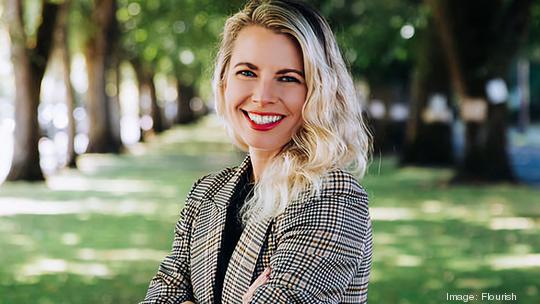
This story is part of a series on diversity, equity and inclusion best practices. Click here for advice from DEI consultants and executives from PGE, PSU and the Portland Trail Blazers on what works and what doesn't.
Amy Jeffers came to DEI work through a career in recruiting. Several years ago she found the work of Paloma Medina who uses neuropsychology to in management training and coaching. Soon the two were collaborating and as Medina stepped back from some work Jeffers stepped in with her consultancy Flourish. Here’s a bit how she views the work in her own words.
On getting in our own way
I spent 13 years in the recruiting industry. When I saw (Medina’s) content, this made sense to me. The role of our brains getting in the way of us being equitable and inclusive and the way we interact with each other and the way we give that sense of belonging or not. That also plays out in the way our systems and frameworks in an organization are structured and designed. Because I was sitting in recruiting I was seeing first hand a lot of ugliness, the bias, the bad practices, bad processes but saying the right thing to get somebody in the door and of course not being able to keep them because the (company) culture isn’t ready for them.
On embracing the messiness
If I am saying executives, generally by statistics, we’re talking about hetero white men. In terms of self-education and next steps, what I encourage is community. Getting in conversation with individuals that are on this journey along side you, this means bringing together cis hetero white men into a conversation that actually addresses the responsibility and the accountability of change. This is a space, as a white person myself, white people are not great at. White men are really great at organizing, they’re great at putting their power and money where they want to see change. That’s the next step, put your money, your privilege, your position of power as a way to drive change. Talk about the failures, because there will be many, talk about what is actually working so others can pick that up. There is very real messiness in this work and it’s nonlinear, which means it can’t always be about productivity, or measurable outcomes. And that is really hard for corporate America.
On focusing on one area at time
The best thing a CEO can do is look at this as a leadership team strategy and not a role. I think we miss the opportunity because we put (DEI) on one person or we put it in a separate line item in strategy. Step back and look at the frameworks in how our organizations are designed. Where can we embed more equity and inclusion even if it means just focusing on one of these areas recruiting, training promotion and professional development. Those areas define workplace culture. We start to systematically change the framework one thing at a time.
On why DEI must be more than bullet point
The more embedded DEI is in all aspects of (company) values, and not just its own bullet point on the values list, makes conversations around how we show up with each other easier. When diversity or belonging are a bullet point on a list of values, it turns difficult conversations around inclusion and how we treat each other into a "diversity" conversation rather than a workplace culture conversation. When all of our values are tied to equity and belonging, we are then able to have full workplace culture conversations. We know how to identify when someone or something is out of alignment. It's no longer just a diversity conversation, it is truly a values conversation.
— As told to Malia Spencer
About Amy Jeffers
Title: Founder
Company: Flourish Training
Expertise: Neurology of equity and inclusion educator, trainer, coach and facilitator



